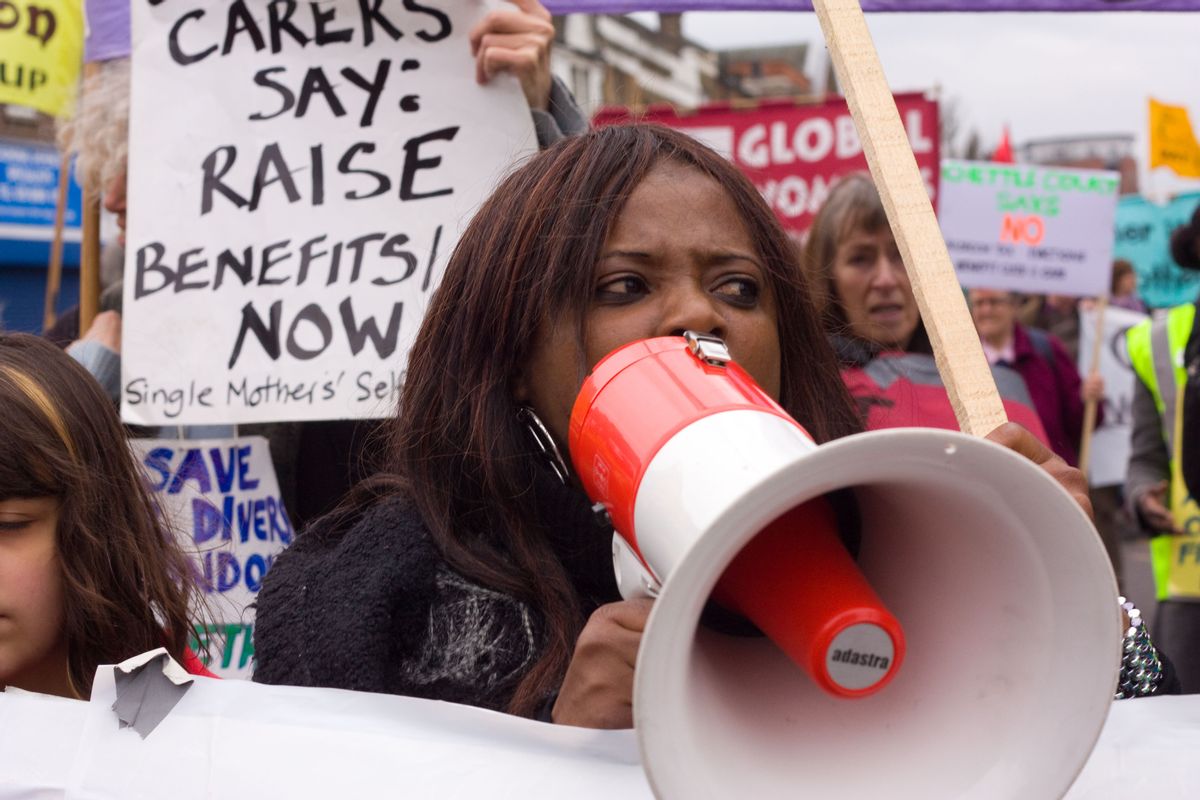Women have made great strides into Britain's workforce over the past 40 years, but remain concentrated in lower-paid, traditionally female occupations such as care services and secretarial work, according to the Office for National Statistics (ONS).
More than two-thirds of women, 67%, are now in work, according to a new analysis by the ONS, compared to just over half – 53% – in 1971. Over the same period, the proportion of men at work has declined from 92% to 76%.
Most of the progress in boosting female employment rates took place from the mid-1970s to the early 1990s, driven by anti-discrimination legislation, and the shift in the economy away from male-dominated manufacturing towards services, where more women tend to be employed. Since 1991, the increase in the proportion of women at work has levelled off.
While the overall pay gap between men and women has narrowed, some traditionally lower-paid occupations remain overwhelmingly dominated by women, according to the ONS. For example, 82% of workers in "caring, leisure and other services", and 77% of administrative and secretarial workers are women.
Even among those people who class themselves as "professional" – a group which is half male, half female overall – the ONS pointed to marked gender differences, with nursing the most common occupation for professional women, while for men it was programming and software development.
"While the UK jobs market has become much more feminised in the past four decades, with the employment rate gap between men and women narrowing markedly, judged by the types of work we do women have made far less progress," said John Philpott, of consultancy the Jobs Economist.
"Whether due to employer practice or because women from their early 20s onward take on the bulk of childcare responsibilities, the persistence of gendered job roles leaves women at a relative disadvantage in the labour market."
The ONS points out that male professionals tend to be concentrated in higher-paid sectors: nurses earn an average of £16.61 an hour, compared to more than £20 for software programmers.
Daisy Sands, of the feminist campaign group the Fawcett Society, said: "The analysis shows a consistently higher employment rate for men than women. Sadly, a great deal of this difference can be attributed to our old-fashioned working practices, where combining paid work with other responsibilities is nigh on impossible. Women in the UK still tend to do the lion's share of childcare. Add to this the lack of flexible working opportunities and prohibitively expensive childcare, and we face a situation where for women, work all too often doesn't pay."
The ONS's analysis also suggests younger women are managing to elbow their way into highly paid positions in a way unprecedented in previous generations. Among 25- to 29-year-olds, for example, 47% of the top tenth of earners are women, compared to just 28% among people aged 50 to 64.
Much of the recent increase in women at work has come from mothers, more of whom have chosen to continue in jobs after having children, helped by improved maternity leave and the availability of flexible working.
The ONS has collected data on the proportion of mothers who work only since 1996, when it stood at 67%. It has since risen to 72%, partly as a result of changes in the benefits regime for single parents.
This article originally appeared on guardian.co.uk

Shares